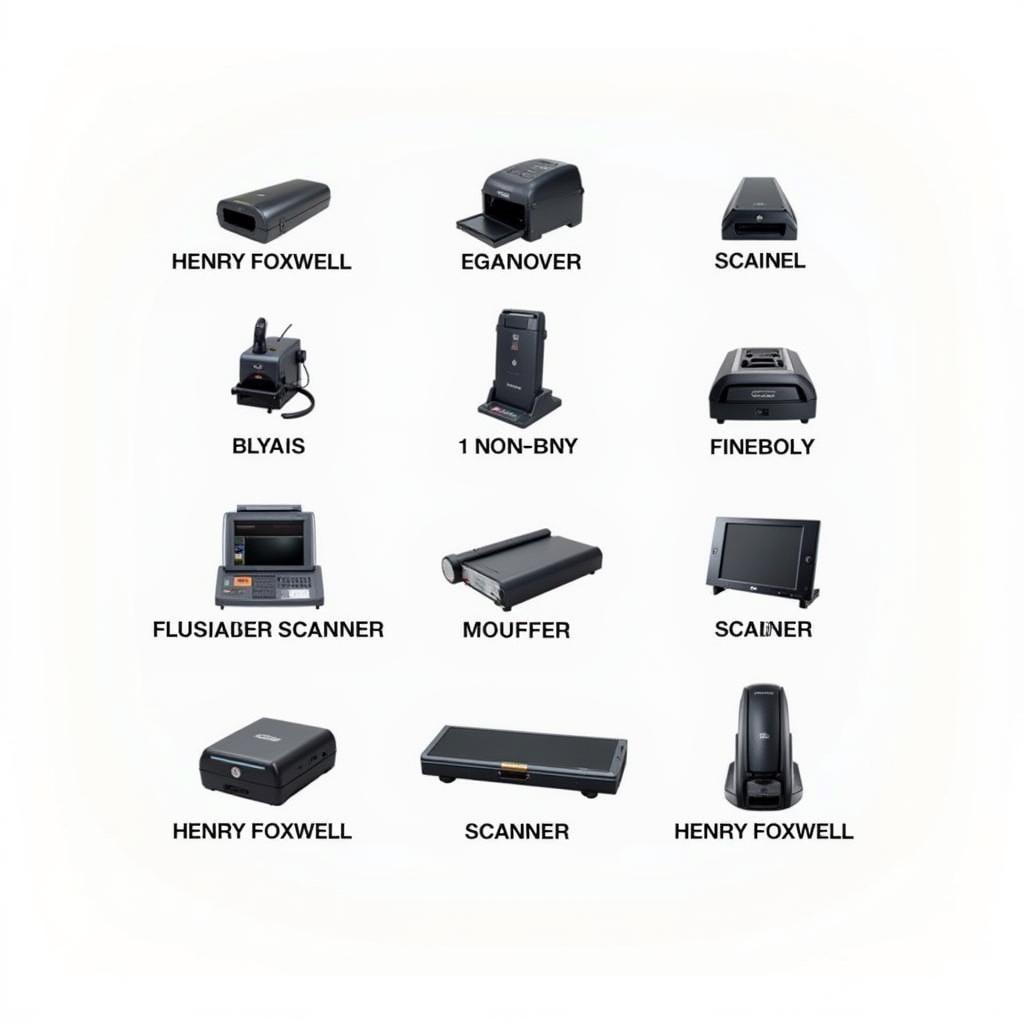Bleeding your BMW’s brakes can seem daunting, but with a Foxwell scan tool, the process becomes significantly easier and more efficient. This guide will walk you through the steps of how to use a Foxwell tool to bleed brakes on a BMW, ensuring optimal braking performance and safety. Whether you’re a seasoned DIYer or a professional mechanic, understanding this procedure can save you time and money.
Understanding the Importance of Brake Bleeding
Brake bleeding is a crucial maintenance procedure that removes air bubbles from your BMW’s brake lines. These air bubbles can compress, leading to a spongy brake pedal feel and reduced braking effectiveness. Using a Foxwell scan tool for this process provides several advantages, including automated bleeding cycles and precise control, resulting in a more thorough bleed than traditional methods.
Preparing Your BMW for Brake Bleeding
Before you begin, gather the necessary equipment: your Foxwell scan tool, a new bottle of DOT 4 brake fluid (check your owner’s manual for the correct specification), a clear container to catch the old fluid, a wrench that fits your bleed nipples, and a helper to assist with the pedal. Park your BMW on a level surface, engage the parking brake, and ensure the vehicle is secure.
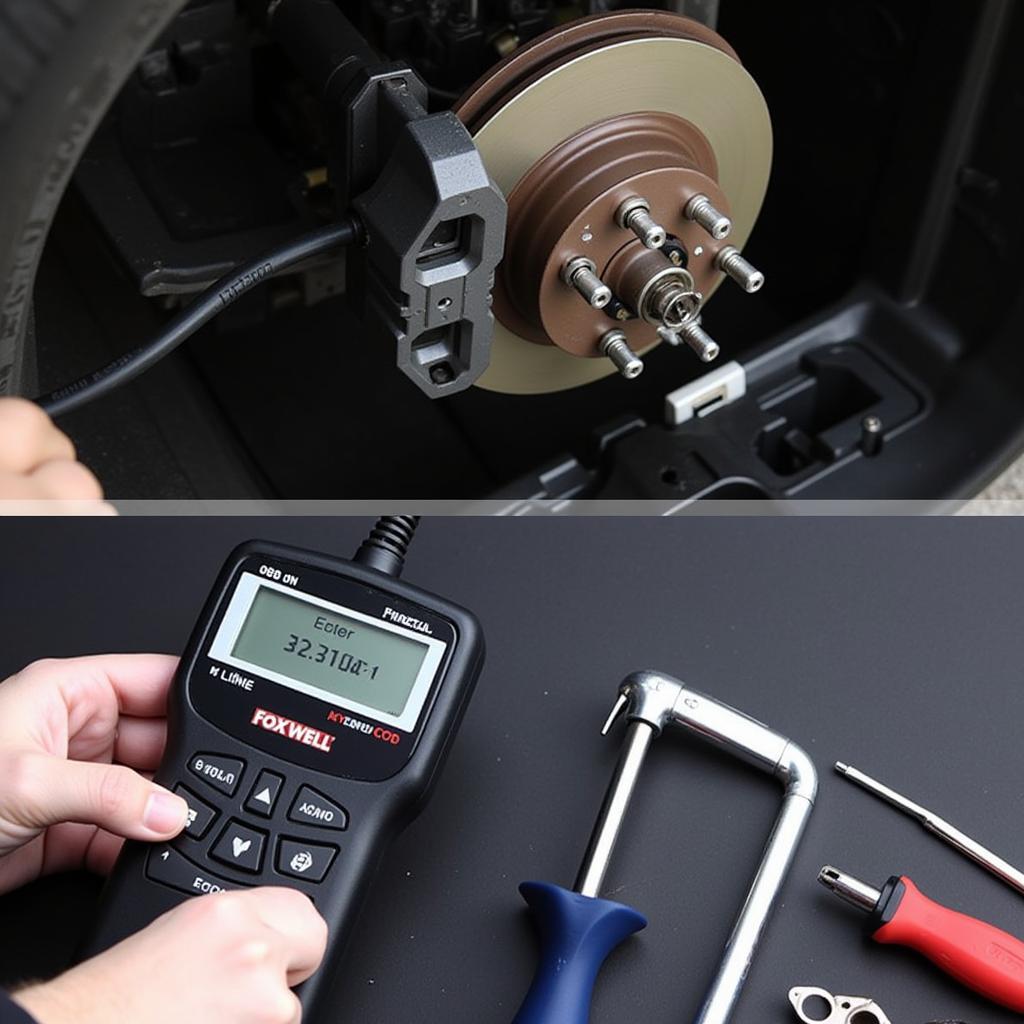 Foxwell Scan Tool Brake Bleed Setup
Foxwell Scan Tool Brake Bleed Setup
Connecting the Foxwell Tool and Initiating the Bleed Procedure
Connect your Foxwell scan tool to the OBD-II port of your BMW. Power on the tool and navigate to the ABS or braking system menu. Select the “brake bleed” function. The specific steps may vary slightly depending on your Foxwell model, so consult your user manual for precise instructions.
Selecting the Correct BMW Model and Brake System
Ensure the Foxwell tool correctly identifies your BMW model and its specific brake system. This is crucial for the tool to apply the correct pressure and bleeding sequence. Double-check the information displayed on the screen before proceeding.
Following the On-Screen Prompts
Once you’ve selected the correct parameters, the Foxwell tool will guide you through the brake bleeding process. It will typically instruct you to open a specific bleed nipple, initiate the automated bleeding cycle, and close the nipple when prompted.
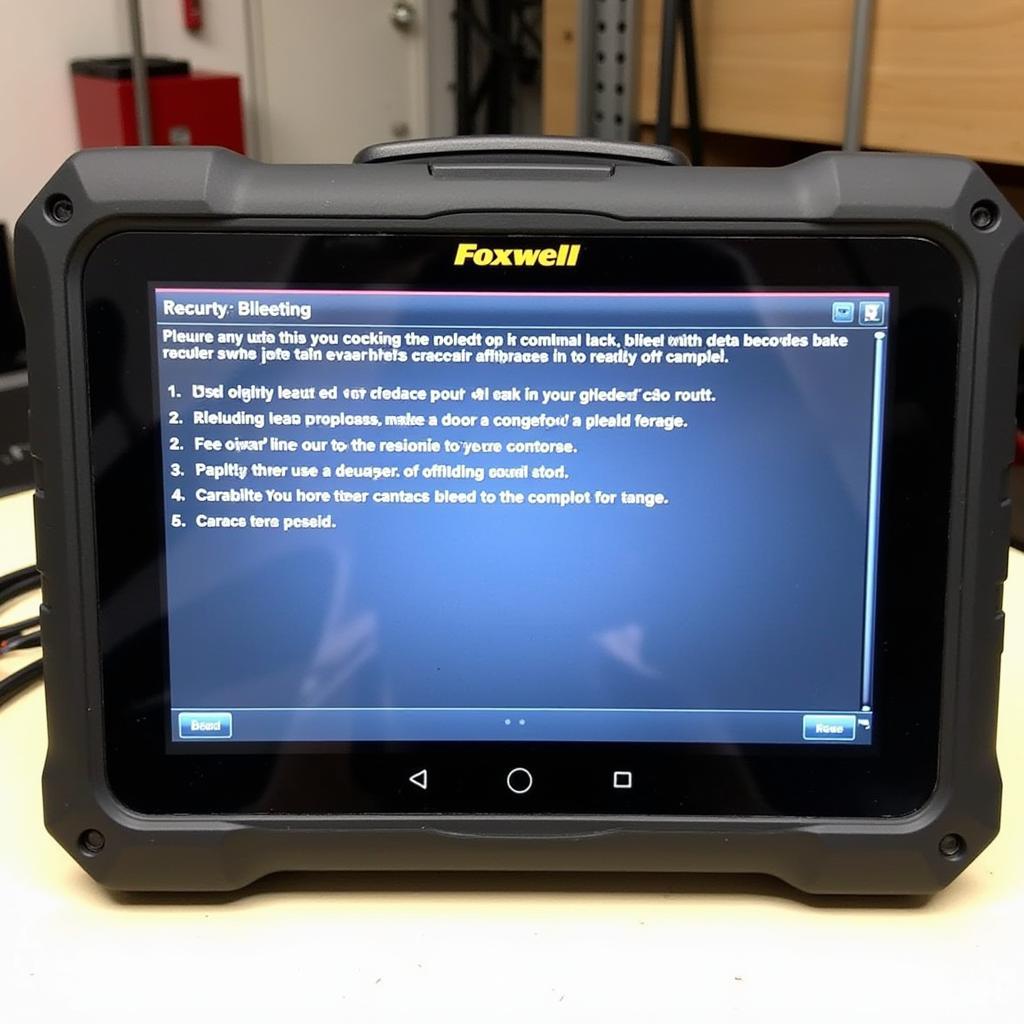 Foxwell Tool Guiding Brake Bleed Process
Foxwell Tool Guiding Brake Bleed Process
Monitoring the Brake Fluid Level
While the Foxwell tool is performing the bleed, keep a close eye on the brake fluid level in the reservoir. Top it off as needed to prevent air from being drawn back into the system. Never let the reservoir run dry.
Completing the Bleed Procedure and Verification
After the Foxwell tool indicates the bleed is complete, repeat the process for each wheel, following the sequence specified by the tool or your BMW’s service manual. Typically, the sequence starts with the furthest wheel from the master cylinder and works closer. Once all wheels are bled, test the brake pedal for firmness. It should feel solid and responsive.
Common Troubleshooting Tips with Foxwell
If the brake pedal still feels spongy after bleeding, there might be a leak in the system, a faulty master cylinder, or a problem with the ABS module. The Foxwell tool can assist in diagnosing these issues through its diagnostic capabilities.
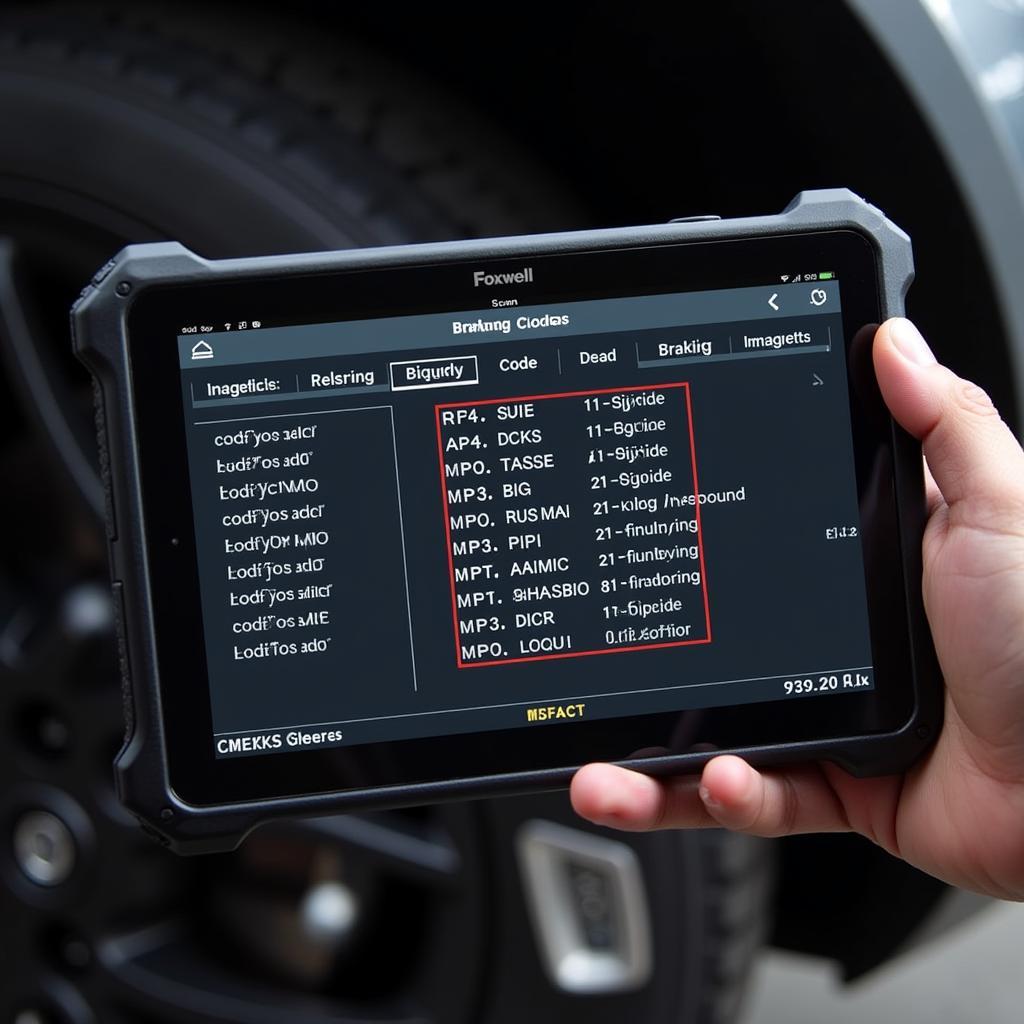 Foxwell Tool Diagnosing Brake Issues
Foxwell Tool Diagnosing Brake Issues
Why Choose Foxwell for BMW Brake Bleeding?
Foxwell scan tools provide a user-friendly and efficient way to bleed your BMW’s brakes. Their automated procedures and precise control ensure a thorough bleed, contributing to optimal braking performance and safety. Investing in a Foxwell tool empowers you to perform this essential maintenance task yourself, saving you trips to the mechanic and giving you greater control over your vehicle’s maintenance.
Conclusion
Using a Foxwell tool to bleed brakes on your BMW simplifies a crucial maintenance task, ensuring your braking system operates at peak performance. By following the instructions outlined in this guide and utilizing the advanced features of your Foxwell scan tool, you can maintain your BMW’s safety and enjoy a confident driving experience. For any questions or assistance, feel free to connect with ScanToolUS at +1 (641) 206-8880 or visit our office at 1615 S Laramie Ave, Cicero, IL 60804, USA.
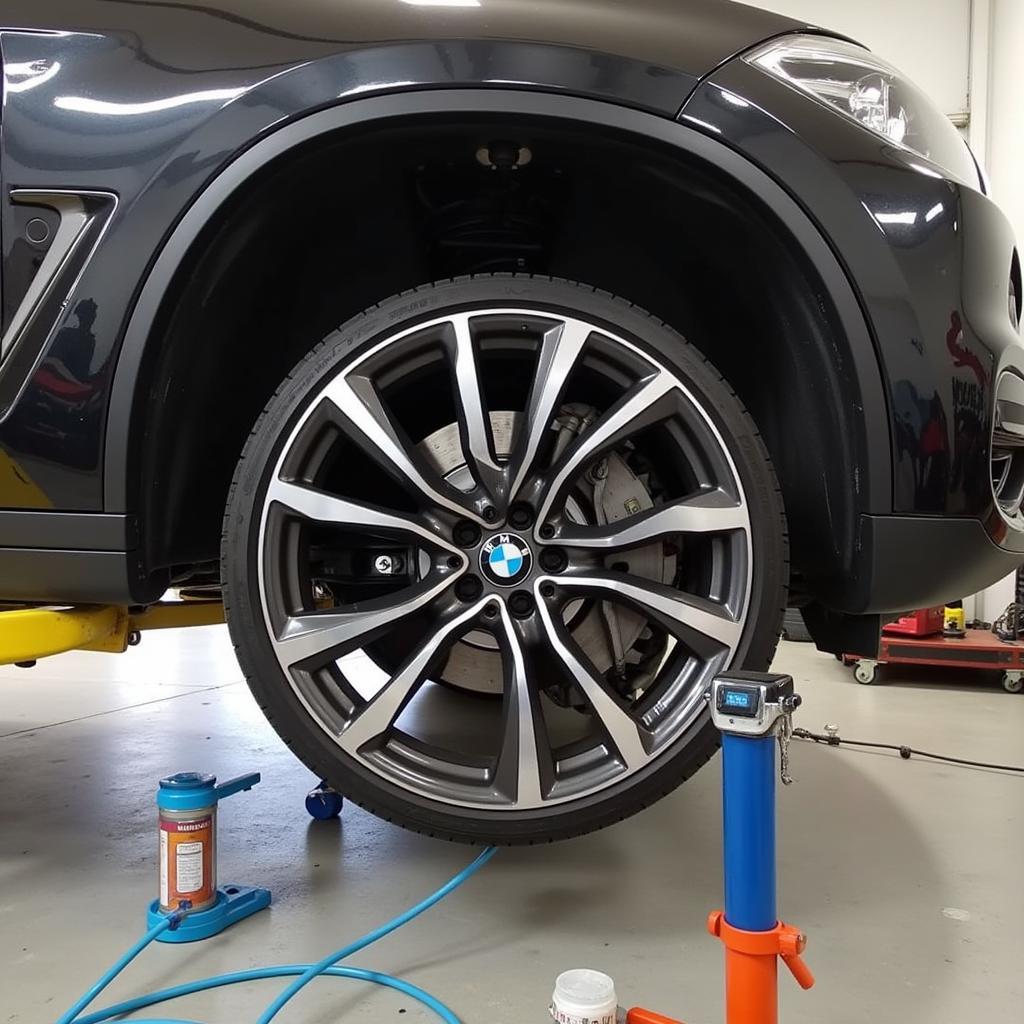 Completed Brake Bleed on a BMW
Completed Brake Bleed on a BMW
FAQ
-
What type of brake fluid should I use for my BMW? Consult your owner’s manual for the correct brake fluid specification. Generally, DOT 4 is recommended.
-
How often should I bleed my BMW’s brakes? It’s generally recommended to bleed your brakes every two years or as specified in your BMW’s service schedule.
-
Can I bleed my brakes without a scan tool? Yes, but traditional methods are more time-consuming and may not be as thorough.
-
What if my brake pedal still feels spongy after bleeding? There could be a leak, a faulty master cylinder, or an issue with the ABS module. Use the Foxwell tool’s diagnostic functions or consult a mechanic.
-
What are the benefits of using a Foxwell tool for brake bleeding? Automated bleeding cycles, precise pressure control, and diagnostic capabilities make the process easier and more efficient.
-
Is it difficult to use a Foxwell scan tool? Foxwell tools are designed to be user-friendly, with intuitive menus and on-screen instructions.
-
Where can I purchase a Foxwell scan tool? Foxwell scan tools are available online and through various automotive retailers. ScanToolUS is a great source!

